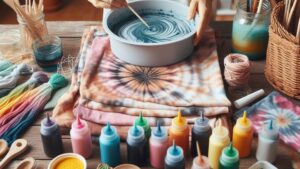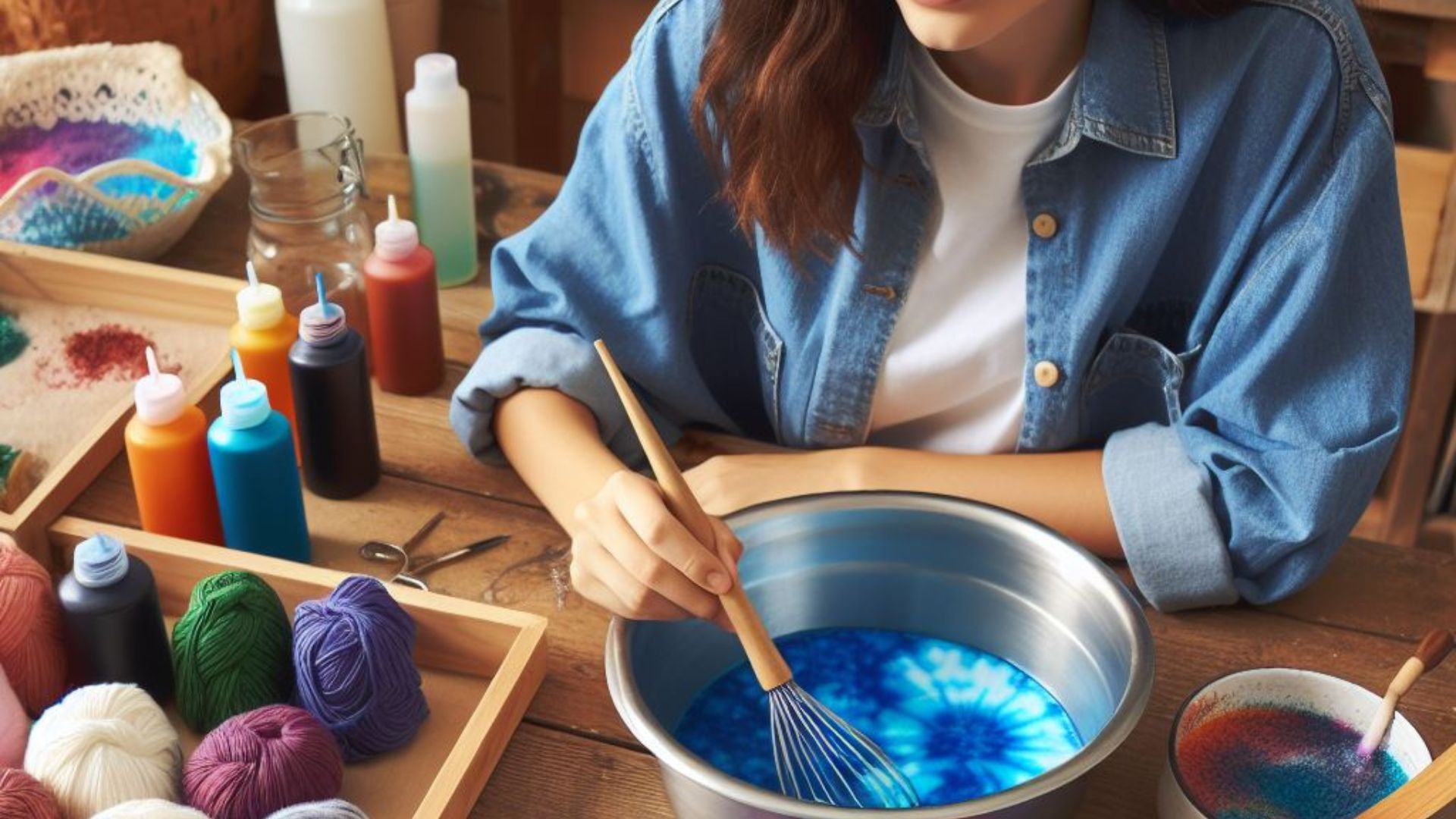Dyeing fabrics or materials is a creative and engaging process that allows for personal expression. When it comes to selecting dyes, individuals often deliberate between liquid and powder forms. One of the essential aspects to consider is the setting time the duration required for the dye to permanently adhere to the material. Let’s delve into the differences between liquid and powder dyes in terms of their setting times, helping you make an informed choice for your dyeing endeavors.
Liquid Dyes: Swift Absorption with Faster Setting Times
Liquid dyes, as the name suggests, come in a liquid form, usually pre-dissolved and ready to use. They are primarily composed of dye particles suspended in a liquid medium, which can vary from water to alcohol-based solutions.
The advantage of liquid dyes lies in their rapid absorption by the material due to their already dissolved state. This quick absorption translates into a relatively faster setting time compared to powder dyes.
The setting time for liquid dyes can vary depending on various factors, including the type of fabric or material being dyed, the specific dye formulation, and the desired color intensity. Generally, liquid dyes tend to set more quickly, making them a favorable choice for those seeking efficiency and speed in their dyeing process.
Powder Dyes: Versatility with Adjustable Setting Times
Powder dyes, on the other hand, come in a dry, powdered form and require dissolution in a liquid medium before application. These dyes offer versatility as users can control the dye concentration by adjusting the amount of powder dissolved, allowing for customized color intensities.
In terms of setting time, powder dyes may have a slightly longer duration compared to liquid dyes. The dissolution process and subsequent absorption by the material can take a bit more time, especially when compared to the rapid absorption of liquid dyes. However, this duration can vary based on factors such as the specific powder dye used, the material being dyed, and the technique employed.

Factors Influencing Setting Time
Several elements influence the setting time of both liquid and powder dyes:
Fabric Type:
Different fabrics have varying absorption rates. Natural fibers like cotton and wool tend to absorb dyes faster than synthetic materials like polyester.
Dye Concentration:
The concentration of the dye solution affects setting time. Higher concentrations may result in faster setting times, but they might also affect the final color intensity.
Application Technique:
The technique used to apply the dye can impact setting time. Methods like immersion dyeing versus direct application may alter the absorption speed.
Temperature and pH Levels:
Temperature and pH levels of the dye bath or solution can influence how quickly the dye sets. Warmer temperatures often expedite the process.
So, while liquid dyes generally offer faster setting times due to their pre-dissolved state, powder dyes provide versatility in color intensity and application techniques. The choice between the two depends on personal preference, the desired outcome, and the specific project requirements.
For further exploration into dyeing techniques and material-specific guidelines, consider checking out these resources:
- Dyeing Fabrics: Techniques and Tips – TextileArtist.org
- The Chemistry of Fabric Dyeing – Scientific American
- Fabric Dyeing: A Comprehensive Guide – Fabrics-Store.com
Experimenting with both liquid and powder dyes can offer valuable insights into their unique characteristics, allowing you to choose the most suitable option for your creative endeavors. Happy dyeing
the key to successful dyeing lies not only in the choice of dye but also in patience, experimentation, and a willingness to explore different techniques to achieve desired results.
Tips for Optimizing Setting Times
Whether you opt for liquid or powder dyes, here are some tips to help optimize setting times and achieve vibrant, long-lasting colors:
1. Fabric Preparation:
Ensure the fabric is clean and free from any finishes or coatings that might hinder dye absorption. Pre-washing the fabric can enhance dye uptake.
2. Dye Dissolution:
For powder dyes, follow manufacturer instructions to dissolve the dye thoroughly. Proper dissolution ensures even color distribution and efficient absorption.
3. Temperature Control:
Maintain an optimal dyeing temperature. Warm water or higher dye bath temperatures can expedite setting times by promoting faster absorption.
4. Stirring and Agitation:
Agitate the dye bath gently to facilitate even distribution of the dye particles. Stirring helps in uniform coloration and aids in quicker absorption.
5. Duration of Immersion:
The length of time the fabric spends in the dye bath influences the color intensity and setting time. Follow guidelines but also consider testing shorter or longer immersion times for varied effects.
6. Rinse and Fixation:
After dyeing, rinse the fabric thoroughly to remove excess dye. Some dyes may require additional steps like heat setting or using fixatives to enhance colorfastness.
7. Testing and Experimentation:
Conduct dyeing experiments on small fabric swatches to determine the ideal settings for your specific dye, fabric, and desired outcome. This allows for adjustments without compromising larger projects.
8. Patience and Observation:
Observe the fabric throughout the dyeing process. Patience is key as rushing might affect the final result. Monitor the color development and adjust as necessary.
By employing these tips, you can streamline the dyeing process and manipulate setting times to achieve the desired color intensity and permanence.
Conclusion
Liquid and powder dyes both offer unique advantages in the dyeing process. While liquid dyes boast quicker setting times due to their pre-dissolved state, powder dyes provide versatility in color concentration and application techniques. The choice between the two depends on personal preferences, project requirements, and the desired outcome.
successful dyeing involves not just selecting the right dye but also understanding the fabric, following proper techniques, and allowing for experimentation. By exploring different methods and optimizing setting times, you can create beautifully dyed materials tailored to your vision.
Dive into the world of dyeing, embrace the creative process, and enjoy the vibrant results brought to life by your choice of dye and technique.
Comparison tabular
| Aspect | Liquid Dyes | Powder Dyes |
|---|---|---|
| Form | Pre-dissolved liquid | Dry, powdered form |
| Setting Time | Generally quicker due to pre-dissolved state | Slightly longer due to dissolution process |
| Absorption | Rapid absorption due to already dissolved form | Requires dissolution before absorption |
| Color Control | Limited control over color intensity once premixed | Versatile, allows customization of color concentration |
| Versatility | Limited in terms of adjusting color intensity | Offers flexibility in concentration and application |
| Ease of Use | Easy to apply without additional preparation | Requires proper dissolution before application |
| Storage | Prone to degradation over time if not stored properly | Generally more stable and easier to store |
| Application | Convenient for quick dyeing sessions | Suitable for projects requiring detailed color control |
| Example Use Case | Quick projects or when precise color matching isn’t crucial | Projects requiring specific or adjustable color tones |
This table provides a concise overview of the characteristics and differences between liquid and powder dyes, aiding in the decision-making process based on individual preferences and project requirements.
Wrapping up
The choice between liquid and powder dyes isn’t just about setting times it’s about flexibility, ease of use, and achieving your desired hues. Liquid dyes offer swift absorption and simplicity, ideal for quick projects, while powder dyes provide versatility and customizable color intensity, perfect for those seeking precise control over shades.
Whichever you choose, remember that successful dyeing involves not just the selection of the dye but also understanding the fabric, employing proper techniques, and embracing experimentation. So, dive into your creative projects, explore the vibrant possibilities these dyes offer, and enjoy the journey of transforming fabrics into personalized works of art.
Whether it’s the convenience of liquid dyes or the adaptability of powder dyes that captures your interest, the key lies in enjoying the process, experimenting with different techniques, and ultimately creating something uniquely yours. Happy dyeing.

For over a decade, I’ve been Mike, an artist, crafter, and designer deeply immersed in the Croc world. I thrive on crafting unique, size-inclusive patterns, fostering creativity, and sharing them on ktforum.com. My designs aim to ignite your creative spark and delight you, ensuring clarity and ease of use through rigorous testing. Join me in expressing your creative flair and showcasing your craft with joy.
Related Posts
- Should you consider the fabric's reaction to dyes for setting time
Considering a fabric's reaction to dyes is crucial when it comes to setting time. Let's…
- Understanding Fabric and Setting Time
Setting time, the duration required for a fabric to retain certain alterations or treatments, varies…
- To Set or Not to Set: Understanding the Tie-Dye Setting Process
Tie-dyeing is a fantastic way to infuse vibrant colors and creative designs into fabrics. Yet,…
- Understanding the Impact of Sunlight on Setting Tie-Dye
Tie-dyeing is a vibrant and creative way to add a burst of color to fabrics.…

